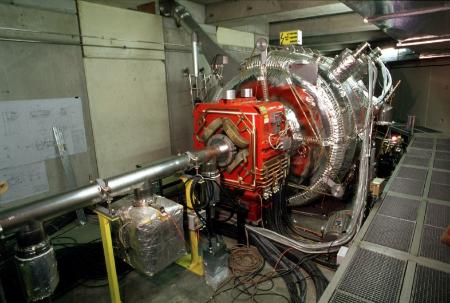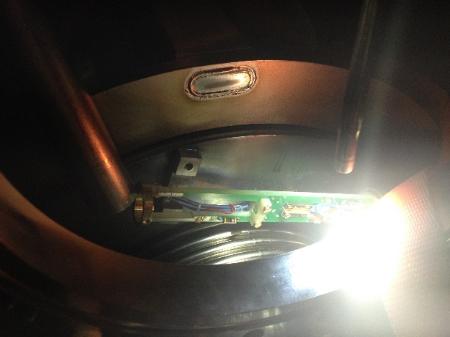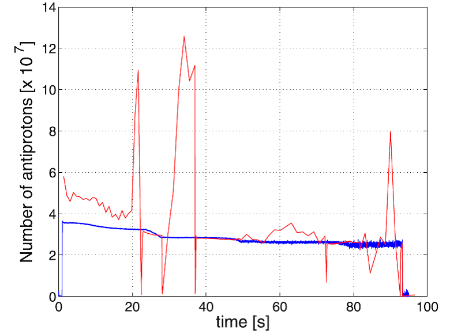Non-invasive intensity measurements of low energy beams demonstrated for the first time
A precise measurement of absolute beam intensity is essential for many experiments. It is a key parameter to monitor losses in a beam and to calibrate the absolute number of particles delivered to the experiments. However, this type of measurement is very challenging with traditional beam current diagnostics when it comes to low energy, low intensity beams due to the very low signal levels.
oPAC fellow Miguel Fernandes and colleagues from the University of Liverpool, have now experimentally demonstrated a new type of monitor in collaboration with CERN, the GSI Helmholtz Centre for Heavy Ion Research and Friedrich Schiller University and Helmholtz Institute Jena.
The Antiproton Decelerator (AD) is a synchrotron machine that provides low-energy antiprotons for studies of antimatter. These studies typically rely on creating antimatter atoms (such as anti-hydrogen) and using them as probes for the most fundamental symmetries in nature such as the invariance of CPT, or of the gravitational acceleration on matter and antimatter.

Inside the Antiproton Decelerator machine. From left to right is shown a: vacuum ion pump (cube-shaped hanging from the beam pipe), a quadrupole magnet (red element) and a big RF cavity.
A precise measurement of the beam intensity in the AD is essential to monitor any losses during the deceleration and cooling phases of the AD cycle, and to calibrate the absolute number of particles delivered to the experiments. However, this is rather challenging with traditional beam current diagnostics due to the low intensity of the antiproton beam which is of the order of 107 particles, corresponding to beam currents as low as a few hundred nano-Amperes. To cope with this, a Cryogenic Current Comparator (CCC) based on a Superconducting QUantum Interference Device (SQUID) was developed and installed in the AD, in a collaboration between CERN, the GSI Helmholtz Centre for Heavy Ion Research, Friedrich Schiller University and Helmholtz Institute Jena.

Close up of the CCC and the cartridge holding the SQUID sensor already installed inside the cryostat.
Previous incarnations of CCC’s for accelerators suffered from issues concerning sensitivity to mechanical vibrations and electromagnetic perturbations. Furthermore, these setups were used for measuring slow beams, usually from transfer lines of accelerators, and were unable to measure short bunched beams presenting fast current variations. In order to measure the beam current and intensity throughout the cycle of a synchrotron machine such as the AD, the CCC needed to be adapted to cope with the fast signals of bunched beams.

Measurement of the number of antiprotons during an AD cycle. In blue is shown the measurement from the new CCC device, and in red is the measurement from the existing monitor based on the analysis of the beam Schottky noise.
In an open access paper just published in the IOP “Superconducting Science and Technology” journal, oPAC fellow Miguel Fernandes and co-authors describe the challenges of implementation and first beam measurements. These are the first-ever CCC beam current measurements performed in a synchrotron using both coasting and short bunched beams. The paper demonstrates the exciting prospects of this new type of beam diagnostics device.
Further information: M. Fernandes, et al., Non-perturbative measurement of low-intensity charged particle beams, Superconductor Science and Technology, Volume 30, Number 1 (2016).